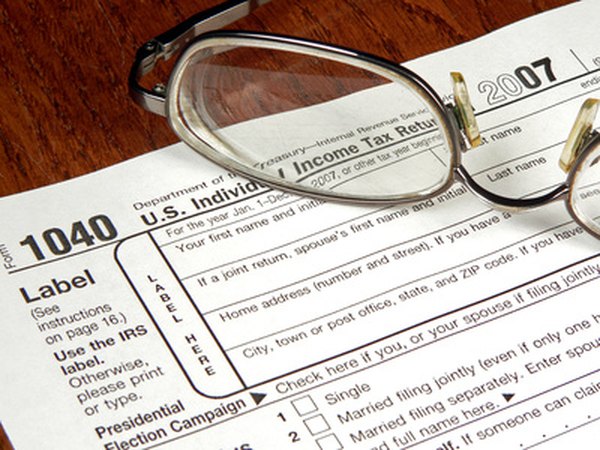Overview of a Mandatory Withdrawal From an IRA at Age 70
Required minimum distributions are taxable to the same extent as regular IRA distributions.
tax forms image by Chad McDermott from Fotolia.com
Like most good things, the tax-sheltered growth in your individual retirement arrangement can't continue indefinitely. For all IRAs except Roths, you have to start taking minimum required distributions when you reach age 70 1/2. Failing to do so incurs tax penalties. Roth IRAs receive special treatment: As long as you're the original account owner, or you're a surviving spouse who treats the Roth IRA as his own, you don't have to take minimum required distributions.
Life Expectancy Tables
Part of figuring how much you have to withdraw depends on your life expectancy, which is determined by tables in IRS Publication 590. If your spouse is your sole beneficiary and is at least 10 years younger than you, use the Joint and Last Survivor Expectancy Table. Otherwise, use the Uniform Lifetime Table. The Single Life Expectancy Table is used only for inherited IRAs. Your age is the age you turn on your birthday that year. For example, if you turn 71 on Dec. 13, 2012, use 71 as your age when using the life expectancy tables in 2012.
Withdrawal Amount
To figure your minimum required distribution, divide your life expectancy by the value of your IRA as of end of the previous year. For example, if you turn 70 1/2 in 2013, use the value of your IRA as of Dec. 31, 2012. If your IRA was worth $300,000 and your remaining life expectancy is 26.5 years, divide $300,000 by 26.5 to find you have to withdraw at least $11,320.75 for your required minimum distribution.
Deadlines
The required minimum withdrawal from your IRA in the year that you turn 70 1/2 years old doesn't actually have to be taken until April 1 of the following year. Say you turn 70 1/2 in August 2014. Your required minimum distribution for 2014 doesn't have to be taken out until April 1, 2015. The downside is that all of your future required minimum distributions have to be taken by Dec. 31. So if you wait until April to take your first required minimum distribution, you'll have to take two in one year.
Penalties
Failing to take the minimum required amount results in a 50 percent tax penalty. For example, if you're supposed to remove $20,000 but you don't take the distribution in time, you'll owe $10,000 in penalties when you file your taxes. In addition, you can't take out extra in one year so that you can take less in another. For example, if you took out $5,000 more than was required in 2014, you can't take out $5,000 less than is required in 2015.
References
Writer Bio
Based in the Kansas City area, Mike specializes in personal finance and business topics. He has been writing since 2009 and has been published by "Quicken," "TurboTax," and "The Motley Fool."

